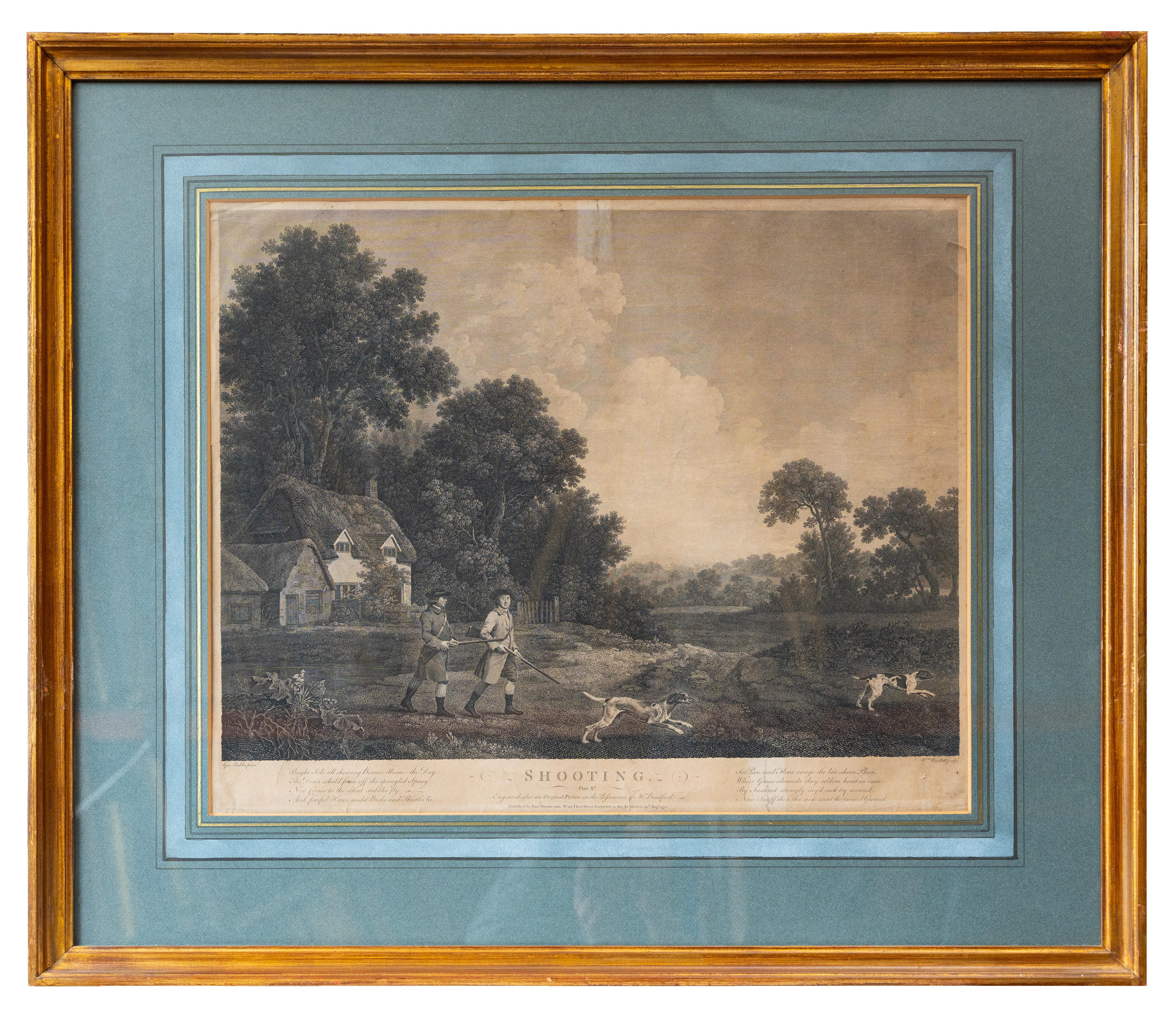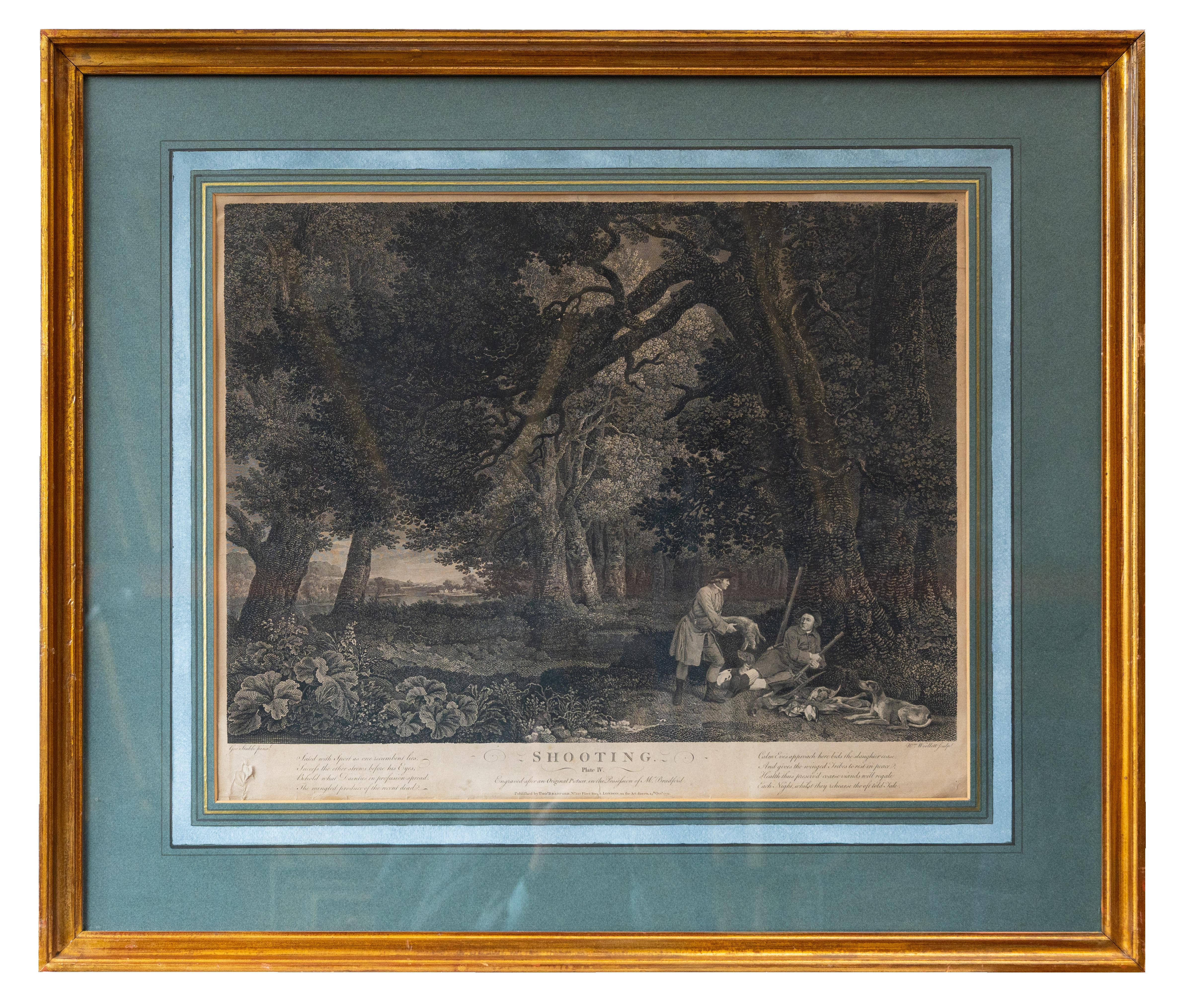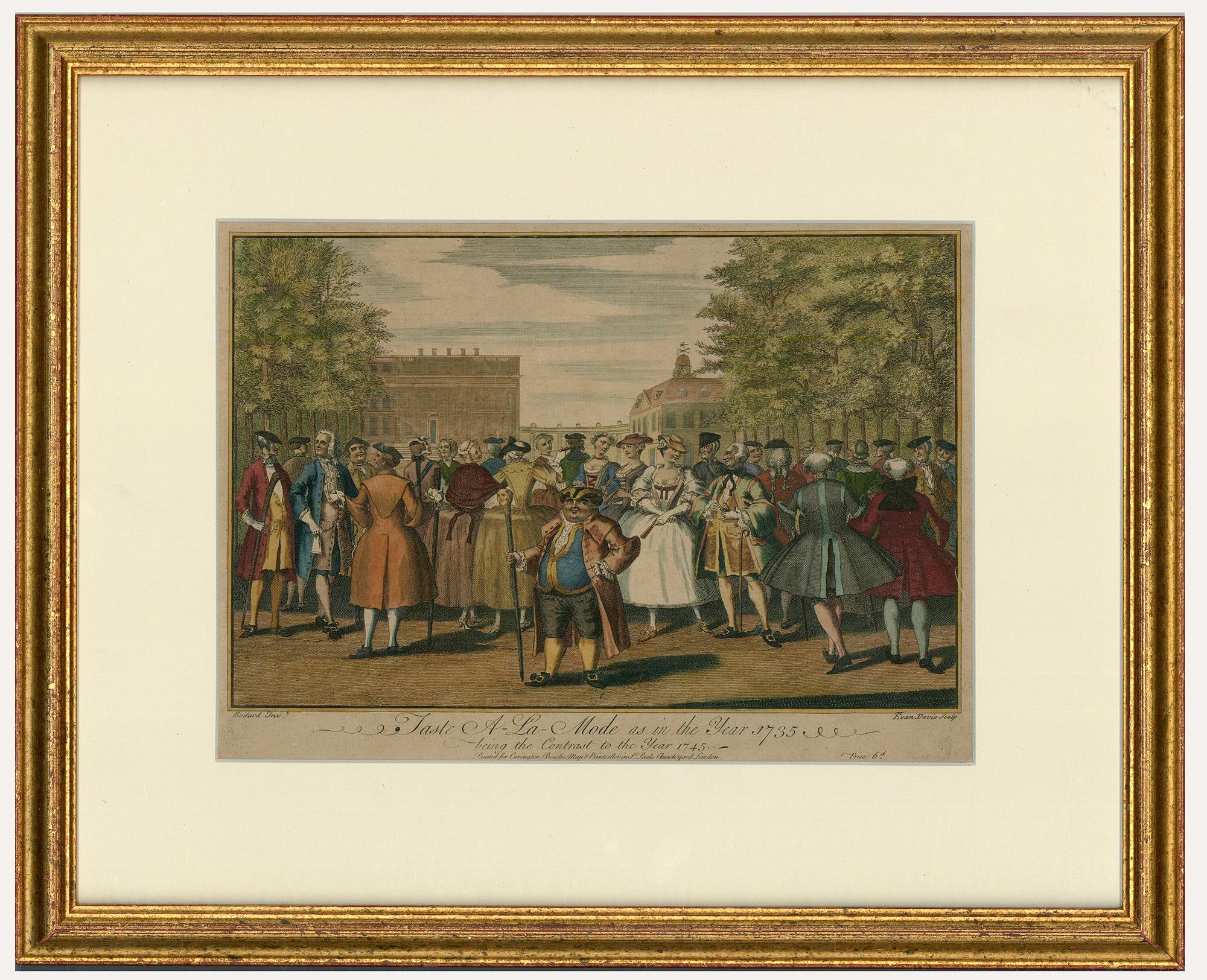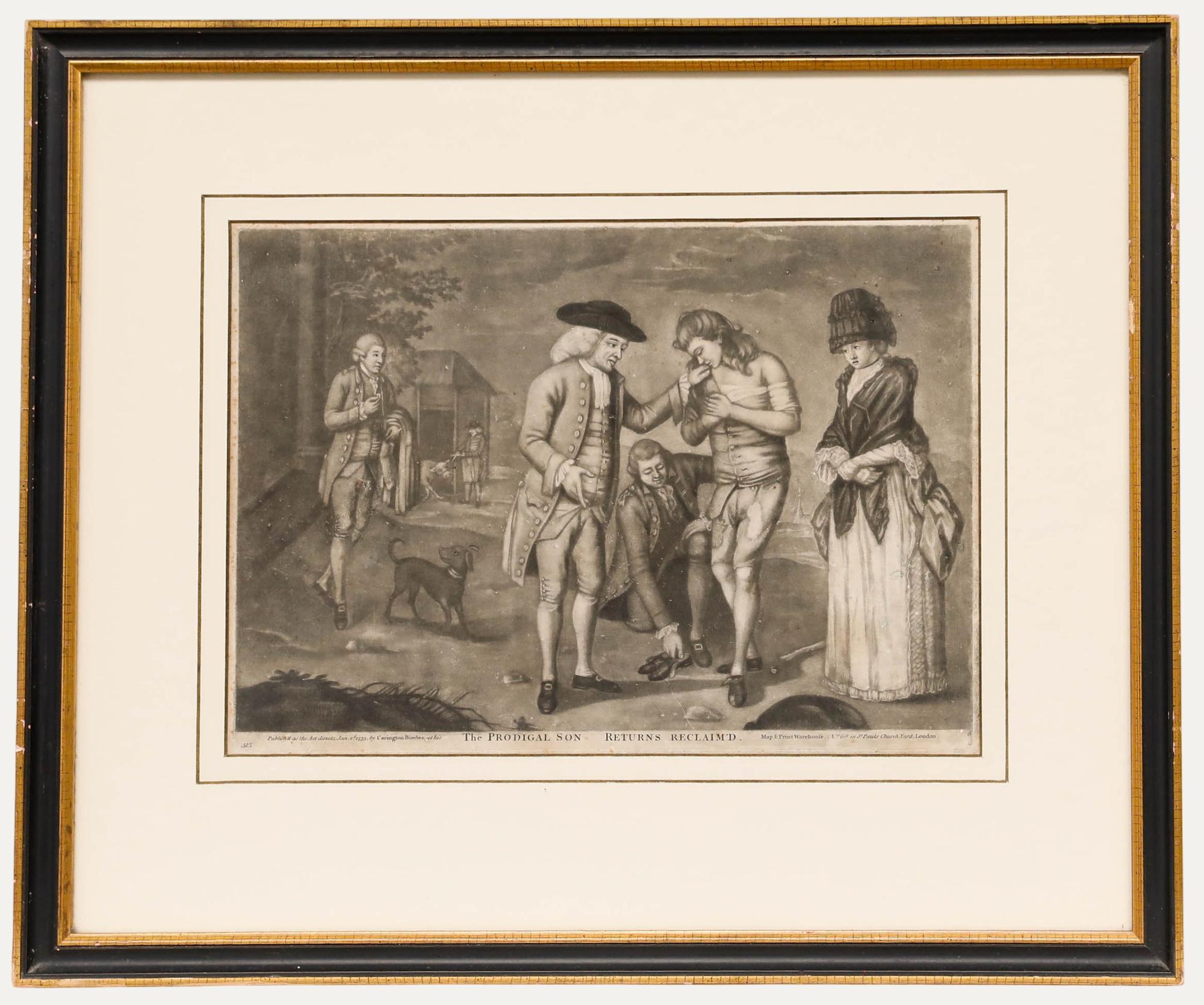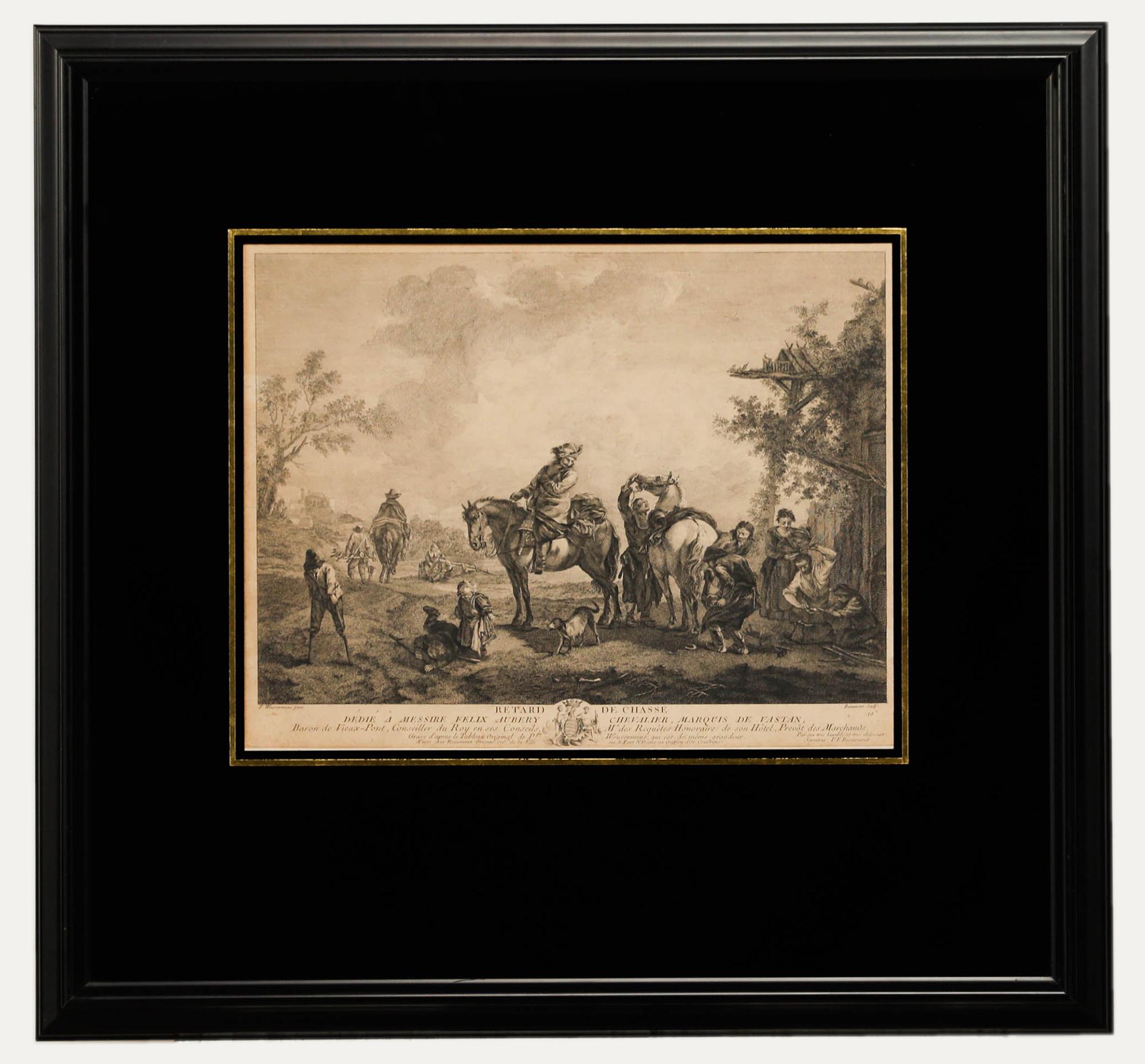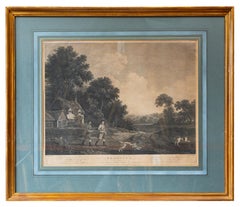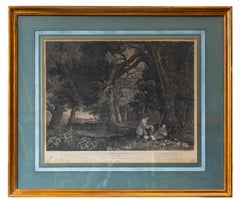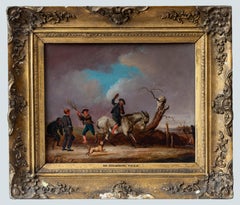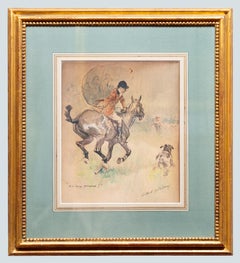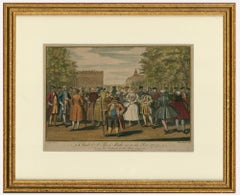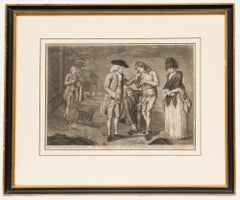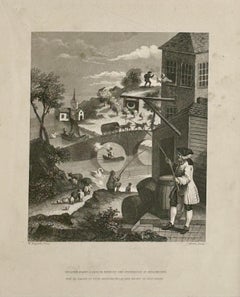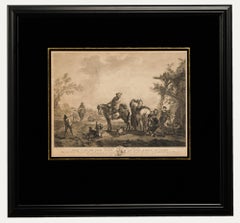Objekte ähnlich wie "Shooting" after George Townley Stubbs
Möchten Sie mehr Bilder oder Videos?
Zusätzliche Bilder oder Videos von dem*der Anbieter*in anfordern
1 von 11
William Wollett"Shooting" after George Townley Stubbs1770
1770
1.289,31 €
Angaben zum Objekt
William Woollett (1735–1785)
William Woollett was one of the most accomplished British engravers of the 18th century, renowned for his technical precision and his ability to translate the subtleties of painting into the language of print. Born in Maidstone, Kent, Woollett trained under John Tinney in London and quickly established himself as a master of landscape and historical engraving.
He became particularly celebrated for his engravings after works by artists such as Richard Wilson, Claude Lorrain, and Benjamin West — notably The Death of General Wolfe (after West), which became one of the most famous British prints of its age. Woollett’s exceptional skill in combining line engraving with etching allowed him to reproduce painterly effects of light, texture, and atmosphere with remarkable delicacy.
Elected an Associate Engraver of the Royal Academy in 1775, Woollett elevated the status of printmaking to that of a fine art. His works, characterized by technical brilliance and tonal richness, remain benchmarks of 18th-century British engraving.
George Stubbs (1724–1806)
George Stubbs is regarded as one of Britain’s greatest animal painters, celebrated for his scientific observation, anatomical accuracy, and artistic sensitivity. Born in Liverpool, he studied anatomy independently, dissecting horses to understand their musculature and structure — research that culminated in his celebrated publication The Anatomy of the Horse (1766).
Stubbs’s paintings combine precise anatomical understanding with poetic naturalism. He is best known for his depictions of horses — often commissioned by aristocratic patrons — but he also painted domestic animals, exotic creatures, and rural scenes. His art bridges Enlightenment empiricism and 18th-century aesthetics, transforming animal portraiture into a genre of intellectual and emotional depth.
Stubbs’s collaborations with engravers such as William Woollett helped disseminate his work to a broader audience. His paintings, whether of sporting scenes or quiet animal studies, reveal a profound respect for the living world, rendered with clarity, balance, and dignity.
Engraved by William Woollett after an original picture by George Stubbs in the possession of Mr. Bradford
Published c. 1770
Shooting forms the third plate in the celebrated series of four sporting subjects — Hunting, Shooting, Fishing, and Coursing — engraved by William Woollett after paintings by George Stubbs.
The composition presents a moment of poised action in the English countryside. Two sportsmen, finely dressed in mid-18th-century hunting attire, stand to the right, one raising his gun as a covey of birds takes flight across a wooded clearing. In the left foreground, a pointer dog springs forward, tense and alert, its muscular form rendered with Stubbs’s characteristic anatomical precision.
The landscape opens beyond into rolling fields, softly defined trees, and a luminous sky — a carefully balanced harmony between human activity and natural calm. Woollett’s engraving captures these subtleties with exceptional finesse: his use of delicate cross-hatching, atmospheric shading, and fine linear modulation conveys both the immediacy of motion and the serenity of the setting.
The inscription, noting that the work was “Engraved after an Original Picture in the possession of Mr. Bradford,” affirms the print’s direct lineage from Stubbs’s original painting, linking the image to its early provenance and contemporary patronage.
This print embodies the ideals of Georgian sporting art — elegant leisure, composure, and respect for nature — while demonstrating the fruitful collaboration between Stubbs’s painterly observation and Woollett’s masterful technique. Together, they created a quintessential image of rural sport that remains both a technical and artistic triumph of 18th-century British printmaking.
Writing in the engraving:
Recto, bottom left image edge: Geo stubbs pinxt
Recto, bottom right image edge: Wm Woollett Sculpt
Recto, bottom left: A gentle Gate that blows along the Land / The Game betrays; the Dog’s they Draw, they stand: / search all the objects that afford delight, / There’s none like this can please the Fowlers sight
Recto, bottom center: SHOOTING / Plate IIId / Engraved after an Original Picture in the possession of Mr Bradford / Published by Thos BRADFORD No B2 Fleet Street LONDON; as the Act directs 30th Sep 1770
Recto, bottom right: Softly they step expecting instant sport / The covey springs to find some safe resort; / like lightning flys the shot, one falls to the Ground, / The rest well mark’d, again are to be found
Provenance:
Ston Easton House
Measurements without frame:
43 x 54 cm
- Schöpfer*in:William Wollett (1735 - 1785, Britisch)
- Entstehungsjahr:1770
- Maße:Höhe: 67 cm (26,38 in)Breite: 79 cm (31,11 in)
- Medium:
- Bewegung und Stil:
- Zeitalter:
- Zustand:
- Galeriestandort:GB
- Referenznummer:Anbieter*in: 601stDibs: LU2841217057282
Anbieterinformationen
5,0
Geprüfte*r Anbieter*in
Jede*r Anbieter*in erfüllt strenge Standards bezüglich Echtheit und Zuverlässigkeit
1stDibs-Anbieter*in seit 2025
6 Verkäufe auf 1stDibs
Typische Antwortzeit: 7 Stunde
- VersandAngebot wird abgerufen …Versand von: Vereinigtes Königreich
- Rückgabebedingungen
Einige Inhalte dieser Seite wurden automatisch übersetzt. Daher kann 1stDibs nicht die Richtigkeit der Übersetzungen garantieren. Englisch ist die Standardsprache dieser Website.
Authentizitätsgarantie
Im unwahrscheinlichen Fall eines Problems mit der Echtheit eines Objekts kontaktieren Sie uns bitte innerhalb von 1 Jahr für eine volle Rückerstattung. DetailsGeld-Zurück-Garantie
Wenn Ihr Objekt nicht der Beschreibung entspricht, beim Transport beschädigt wurde oder nicht ankommt, kontaktieren Sie uns bitte innerhalb von 7 Tagen für eine vollständige Rückerstattung. DetailsStornierung innerhalb von 24 Stunden
Sie können Ihren Kauf jederzeit innerhalb von 24 Stunden stornieren, ohne jegliche Gründe dafür angeben zu müssen.Geprüfte Anbieter*innen
Unsere Anbieter*innen unterliegen strengen Dienstleistungs- und Qualitätsstandards, wodurch wir die Seriosität unserer Angebote gewährleisten können.Preisgarantie
Wenn Sie feststellen, dass ein*e Anbieter*in dasselbe Objekt anderswo zu einem niedrigeren Preis anbietet, werden wir den Preis entsprechend anpassen.Zuverlässige weltweite Lieferung
Unsere erstklassigen Versandunternehmen bieten spezielle Versandoptionen weltweit, einschließlich individueller Lieferung.Mehr von diesem*dieser Anbieter*in
Alle anzeigen"Shooting" after George Stubbs
William Woollett (1735–1785)
William Woollett was one of the most accomplished British engravers of the 18th century, renowned for his precision and his ability to capture the paint...
Kategorie
Spätes 18. Jahrhundert, Akademisch, Figurative Drucke
Materialien
Gravur
"Shooting" after George Stubbs
Von William Woollett
William Woollett (1735–1785)
William Woollett was one of the most accomplished British engravers of the 18th century, renowned for his precision and his ability to capture the paint...
Kategorie
Spätes 18. Jahrhundert, Figurative Drucke
Materialien
Gravur
Kinder spielen mit einem Esel
Von George Harvey
Sir George Harvey war ein bekannter schottischer Maler, der am 1. Februar 1806 in St Ninians (heute Stirling) als Sohn eines Uhrmachers geboren wurde. Obwohl er zunächst eine Lehre a...
Kategorie
19. Jahrhundert, Englische Schule, Figurative Gemälde
Materialien
Öl, Karton
Jagdszene
Von Gilbert Holiday
Peitschenhieb in Aquarell und Graphit auf Papier mit der Darstellung eines Jagdherrn, der einen Jagdhund nach Hause bringt, von Charles Gilbert Joseph Holiday (Brite, 1879-1937).
Kategorie
20. Jahrhundert, Moderne, Tierzeichnungen und -aquarelle
Materialien
Papier, Wasserfarbe
3.867 €
Mann nach einem Esel, English School 19. Jahrhundert
Dieses in einem charmanten, naiven Stil gemalte Werk zeigt eine rustikale häusliche Szene in der englischen Landschaft. Im Zentrum der Komposition steht ein Häuschen, dessen Eingang ...
Kategorie
19. Jahrhundert, Landschaftsgemälde
Materialien
Leinwand, Öl
Bewaldete Landschaft
John Berney Crome (1794-1842) war ein bedeutender englischer Landschaftsmaler, der mit der Norwich School of Painters, einer einflussreichen regionalen Kunstbewegung im England des 1...
Kategorie
19. Jahrhundert, Viktorianisch, Landschaftsgemälde
Materialien
Öl, Täfelung
Das könnte Ihnen auch gefallen
Evan Davis (fl. 1735-1745) – Kupferstich des 18. Jahrhunderts, A-La Mode 1735
Ein handkolorierter Stich, der die Mode des Jahres 1735 darstellt. Gut präsentiert in einem vergoldeten Effektrahmen. In der Platte signiert. Auf Büttenpapier.
Kategorie
Frühes 18. Jahrhundert, Figurative Drucke
Materialien
Gravur
235 € Angebotspreis
20 % Rabatt
Nach Carington Bowles - Kupferstich aus dem 18. Jahrhundert, Der verlorene Sohn kehrt zurück
Ein reizvoller Stich, der das Gleichnis vom verlorenen Sohn aus der Bibel (Lukas 15,11-32) nach dem Originalgemälde von Carington Bowles darstellt. In die Platte eingeschrieben. Präs...
Kategorie
Frühes 18. Jahrhundert, Figurative Drucke
Materialien
Gravur
Wer ein Design ohne das Wissen über Perspektive entwirft
Von William Hogarth
William Hogarth war ein englischer Maler und Kupferstecher und der herausragende britische Künstler seiner Zeit. Während seiner Kindheit saß sein Vater, ein Lehrer, wegen Schulden i...
Kategorie
1830er, Figurative Drucke
Materialien
Gravur
159 € Angebotspreis
20 % Rabatt
Pierre François Beaumont (1719-1777) Gravur des 18. Jahrhunderts, Jagd-Delay
Pierre François Beaumont (1719-1777) nach Philips Wouwerman (1619-1668). In der Platte auf Französisch beschriftet. Präsentiert in einem Rahmen aus schwarzem Furnier mit einem Passep...
Kategorie
18. Jahrhundert, Figurative Drucke
Materialien
Gravur
370 € Angebotspreis
20 % Rabatt
Schießen. Englischer Kupferstich von Woollett nach George Stubbs, 1799
Schießen - Tafel II", Stich aus George Stubbs berühmter Serie von vier Schießgravuren.
Kupferstich mit späterer Handkolorierung von William Woollett...
Kategorie
Spätes 18. Jahrhundert, Viktorianisch, Tierdrucke
Materialien
Gravur
Dean Wolstenholme (1798-1882) Aquatinta, Der Tod von Tom Moody, verschwunden in die Erde
Ein schöner Streik des frühen 19. Jahrhunderts mit der humorvollen Szene des Todes von Tom Moody. Moodys Freunde aus seiner Jagdtruppe versammeln sich um sein offenes Grab und rufen ...
Kategorie
Frühes 19. Jahrhundert, Landschaftsdrucke
Materialien
Aquatinta
249 € Angebotspreis
20 % Rabatt
